Educational high ropes
HIGH ROPES COURSES
THE SWISS ARMY KNIFE OF OUTDOOR EDUCATION
All ropes courses have their roots in the education field. From the first courses designed for training navy personnel, they have been found time and time again to offer enormous benefits for participants.
Facilitated programs often focus on aiming to increase the participants sense of self worth, leadership ability, conflict resolution and problem solving skills, providing a safe environment in which to practice setting aims and taking risks.
Fundamental to this type of course is a “learning by doing” and a “challenge by choice” philosophy, this encourages individuals to participate in the group environment and work to a level of challenge which stretches them but is not threatening.
Our product offering:
PRODUCT: EDUCATIONAL LINEAR HIGH ROPES COURSE

A THREE POLE SIMPLE, WITH 2 SPANS. (Instructor access over the top)
LEFT SPAN: Vertical Play Pen / Ladder Climb / Rope Climb.
RIGHT SPAN: Giant Ladder / Vertical Play Pen.
PRODUCT: EDUCATIONAL LINEAR HIGH ROPES COURSE
VERSATILE, ADAPTABLE, SMALL FOOTPRINT, 20 YEAR DESIGN LIFE.
Our EDUCATIONAL LINEAR COURSES are the culmination of all of our experience building educational courses. This design is the perfect structure if you just need a GLIDER POSSUM or GIANT LADDER. And the perfect structure for a complete ropes course soloution
- The design is compact (fits well on terracces across hills, or against fence lines).
- Simple to operate (Instructors setup and operate from the ground).
- Access for rescues and checks is fully designed into the structure (both vertical and horizontal access).
- There is flexibility if you want to build in stages.
Step 1 choose size – (you can include climbing and abseiling if you like)
Step 2 take a look at the arrangement considerations – (understand the space needed for each element)
Step 3 Choose the elements from our lists below – In ropes course language, elements is the name we give to activities that the users climb up, traverse across, leap off etc. The lists are devided up into types of elements, CLIMBING Elements, SWINGING / LEAPING Elements, TRAVERSING Elements. Some of the elements are disigned for teams, and some more for solo climber.

2 POLE SIMPLE (Instructor practicing access on the beam)
LEFT: High All Aboard RIGHT: Giant Ladder
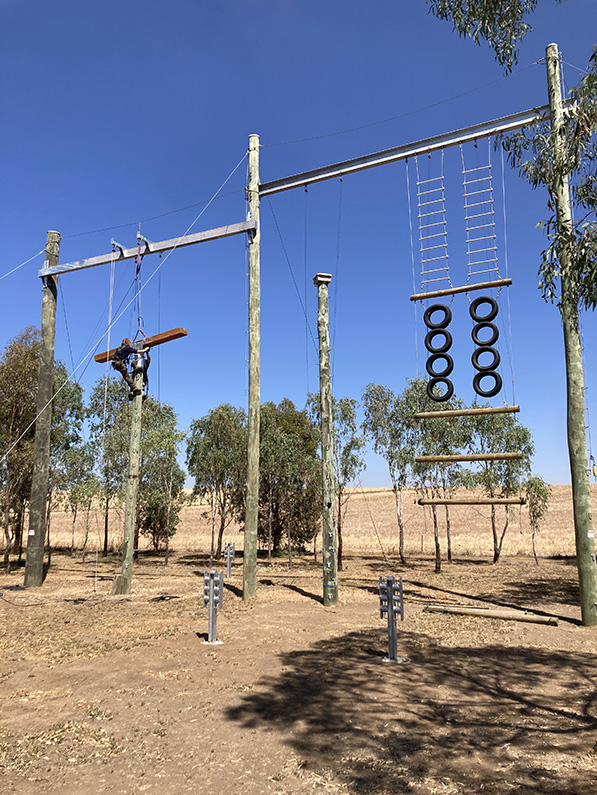
3 POLE SIMPLE
LEFT SPAN: Seesaw.
RIGHT SPAN: High All Aboard / Vertical Play Pen.
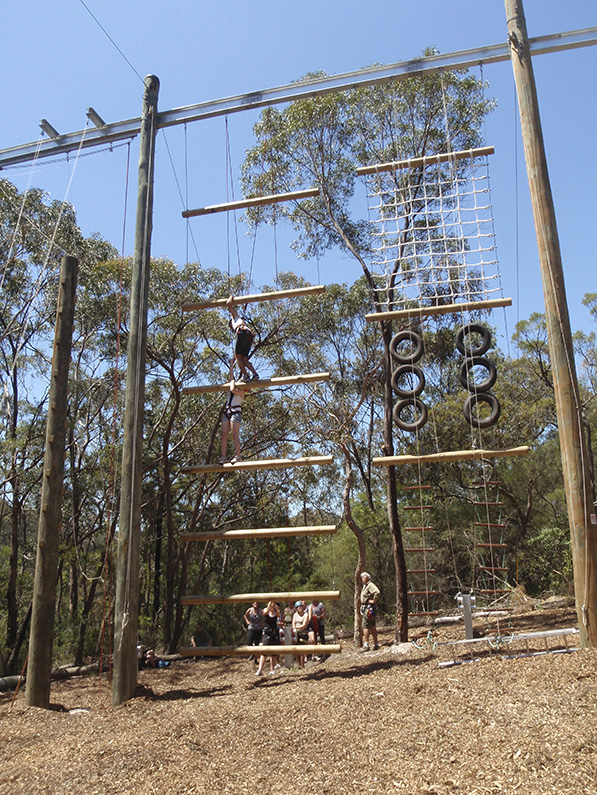
2 POLE DOUBLE CANTILEVER
LEFT: High All Aboard / Leap of Faith.
CENTRE SPAN: Giant Ladder / Vertical Play Pen.
RIGHT CANTILEVER: Crate Stack.
OPTIONS: SIZE
The size of your course will be determined by how many elements you want on the structure, and is influenced by budget and the space available at your site. Consider also that bigger isnt always better, building 2 or 3 structures around your site can give you more programming flexibility than 1 big structure.

2 pole simple

2 pole single cantilever

2 pole double cantilever
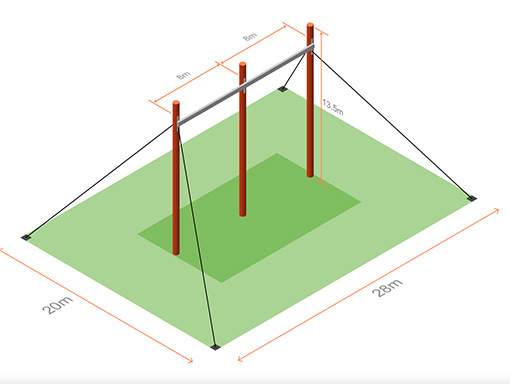
3 pole simple
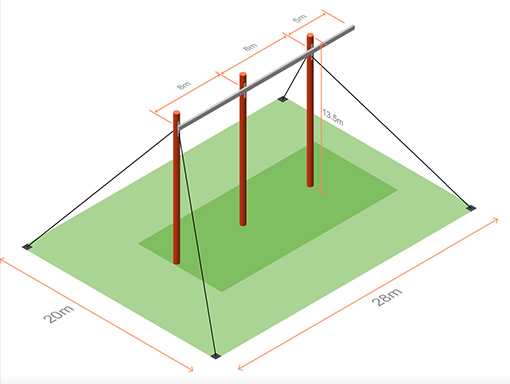
3 pole single cantilever
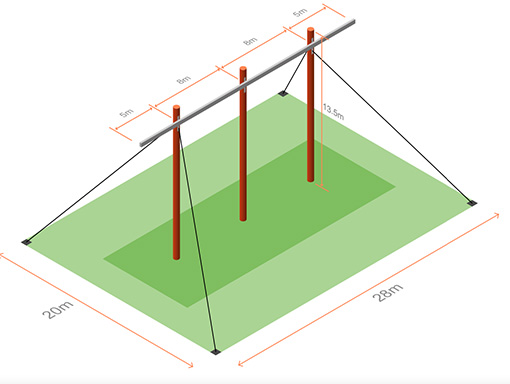
3 pole double cantilever
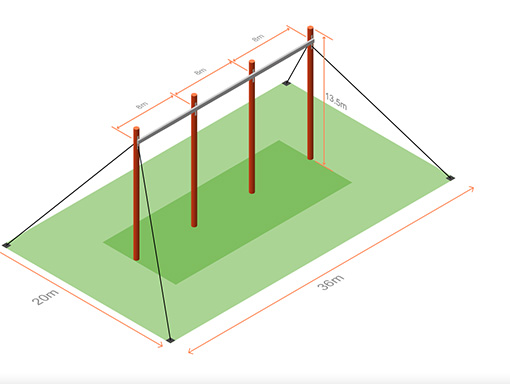
4 pole simple
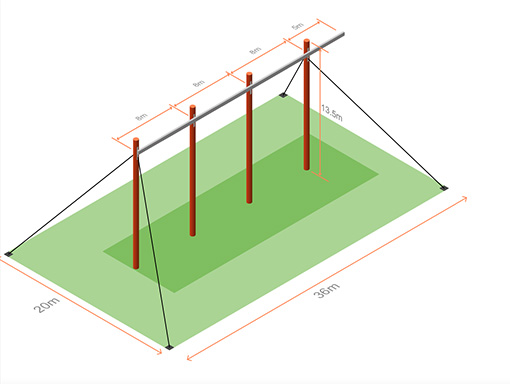
4 pole single cantilever

4 pole double cantilever
OPTIONS: Climbing / abseiling walls
You can add climbing or climbing & abseiling to any EDUCATIONAL LINEAR COURSE. One of the spans becomes a Wall Span.
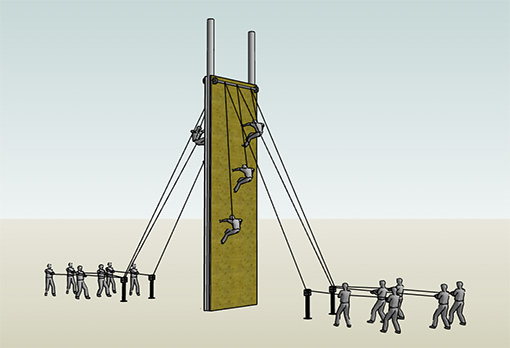
climbing on both sides
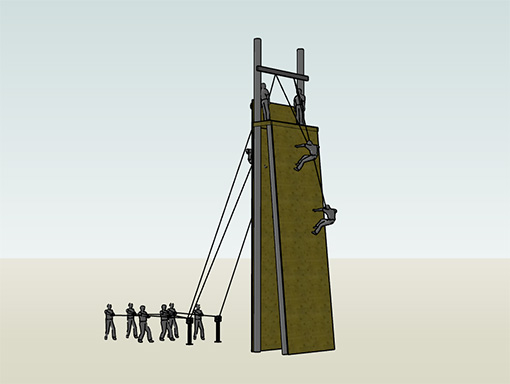
Climbing and abseiling
Arrangement considerations
The elements are arranged into different groups, and require different amounts of space.
SOLO CLIMB & TEAM CLIMB – Users climb vertically. Just a few of the elements need a full 8 meters of space, most elements only need half a span and the majority of the solo climb elements only require a quarter of a span. SO you could arrange 4 quarter span climbs side by side, OR 2 half span climbs OR whatever you need.
SWING / LEAP – Users swing to and fro. All of these elements require the full span, and the full height.
SOLO TRAVERSE & TEAM TRAVERSE – Users travel along the spans. We think of these as stacked into Top, Middle and Bottom levels (The bottom level is only used for elements that start on the ground, EG the inclined Log). When using solo traverse elements – Users typically – attach to a rope, climb a pole to the mid or top level, traverse across, return to the middle, then get lowered.
Another way to use solo traverse elements is to stack them into a layered journey EG – Users attached to a rope, walk up an inclined log, climb the pole to the mid level, traverse across, climb a pole to the top level, traverse across, return to the middle, then get lowered.
The team traverse elements are built at the top level, and require the mid and bottom levels empty.
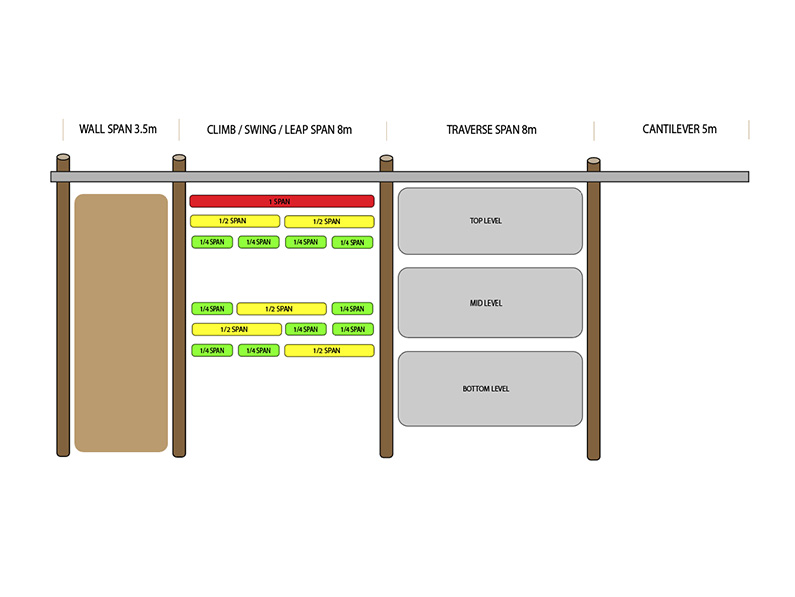
4 POLE SINGLE CANTILEVER. (Wall span on Left)
EXAMPLE SPACE REQUREMENTS
OPTIONS: ELEMENTS – SOLO CLIMB
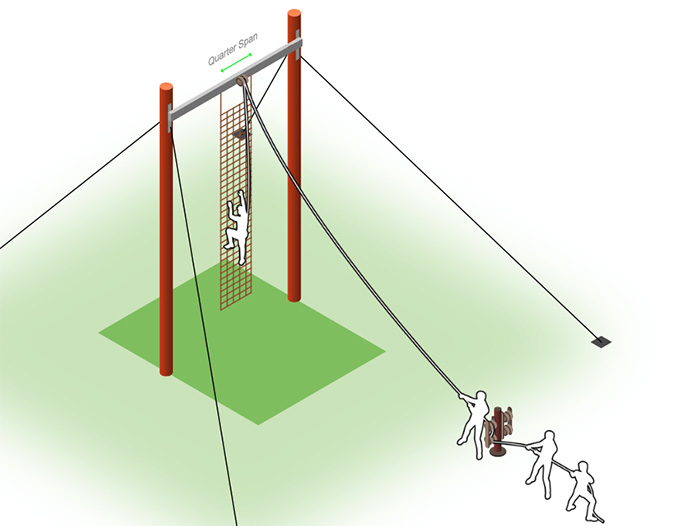
CARGO NET CLIMB

FIRECRACKER CLIMB
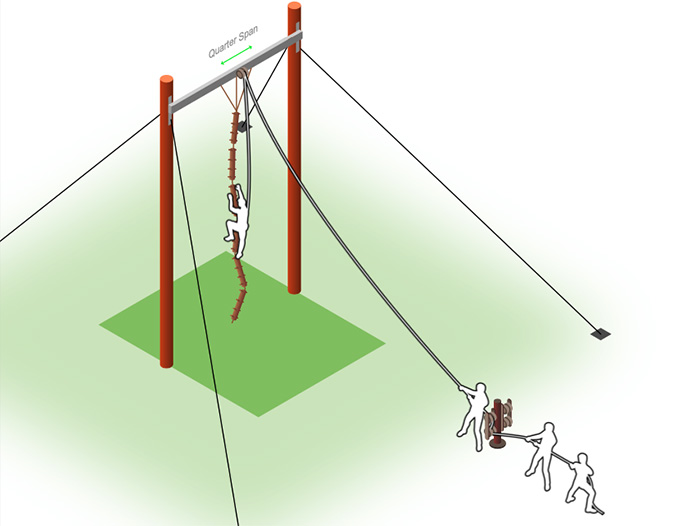
CENTIPEDE CLIMB
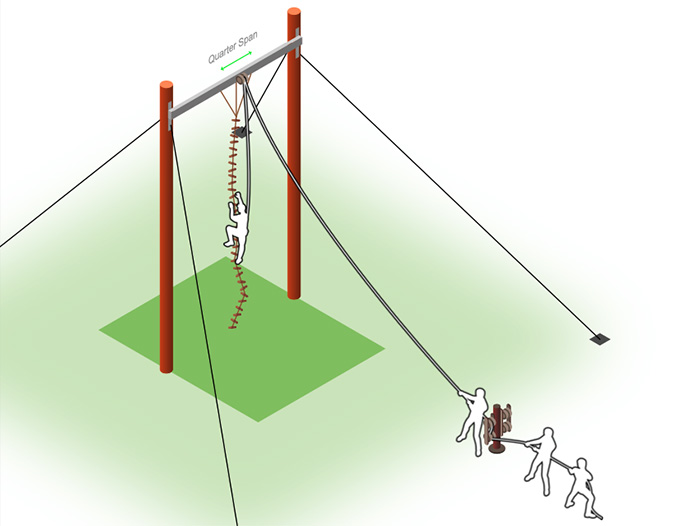
LADDER CLIMB

PEG POLE CLIMB

VERTICAL PLAY PEN CLIMB

ROPE CLIMB

TYRE CLIMB
OPTIONS: ELEMENTS – TEAM CLIMB
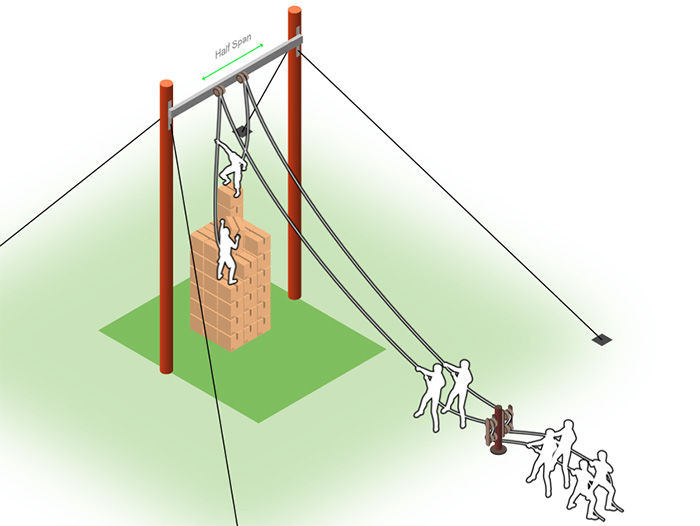
CRATE STACK
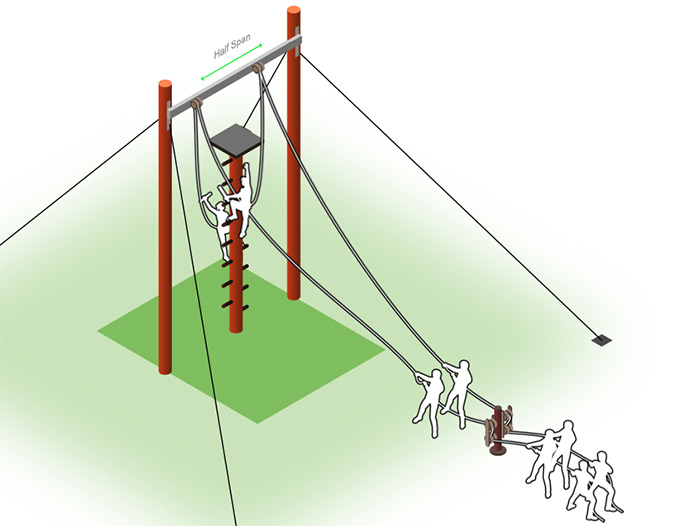
PEG POLE CLIMB
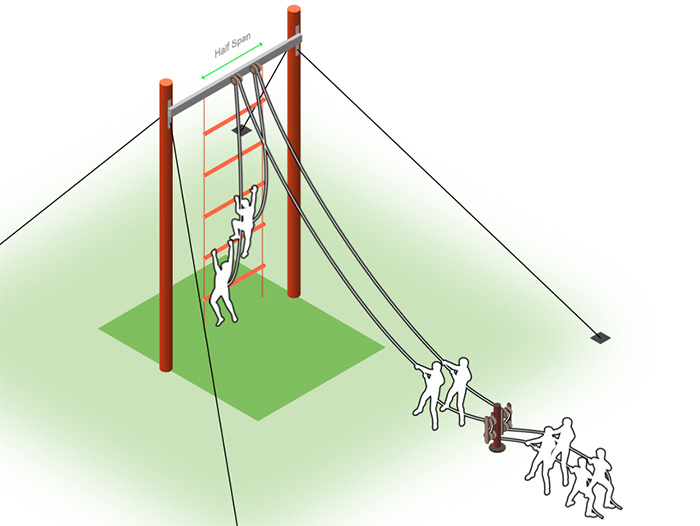
GIANT LADDER

HIGH ALL ABOARD
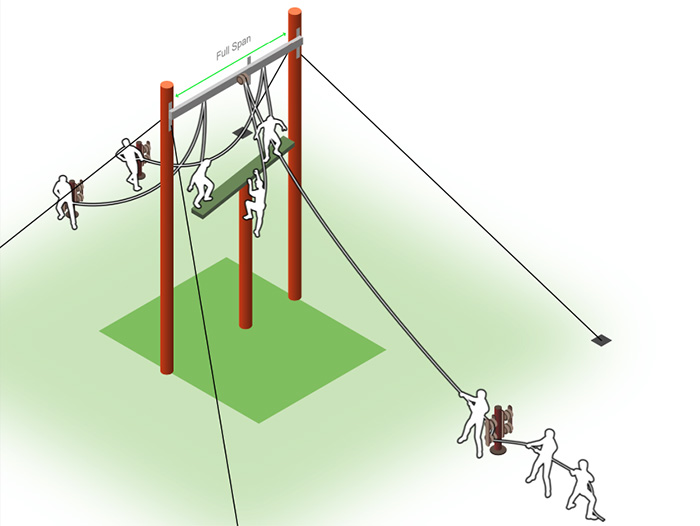
SEE SAW
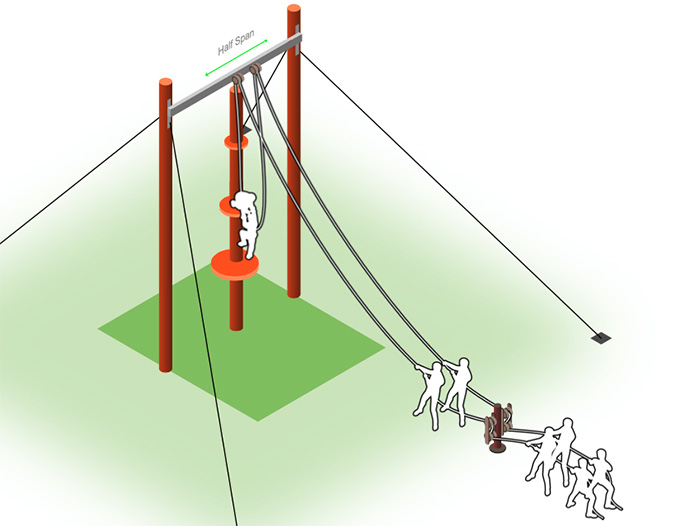
THE STRUGGLE
OPTIONS: ELEMENTS – SWING / LEAP
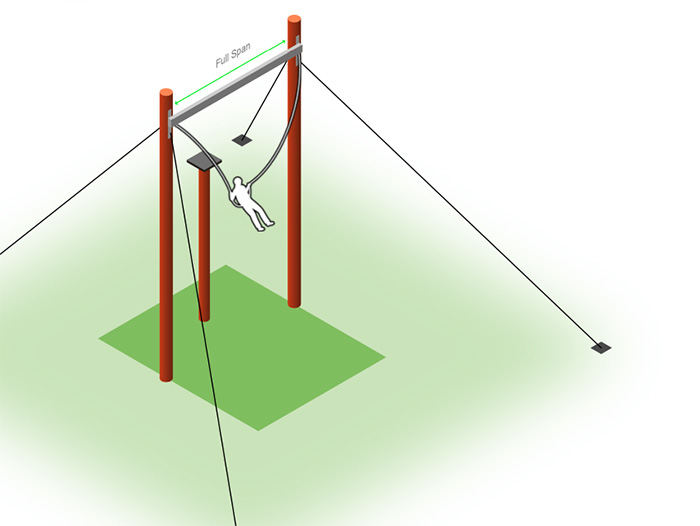
CANYON SWING

GLIDER POSSUM
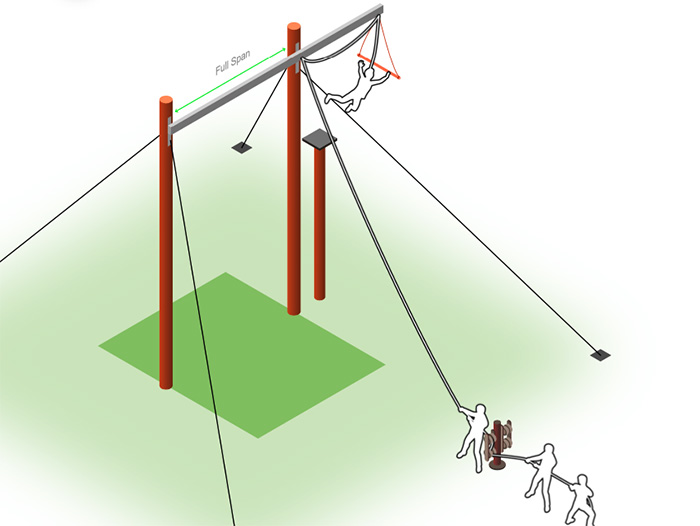
LEAP OF FAITH
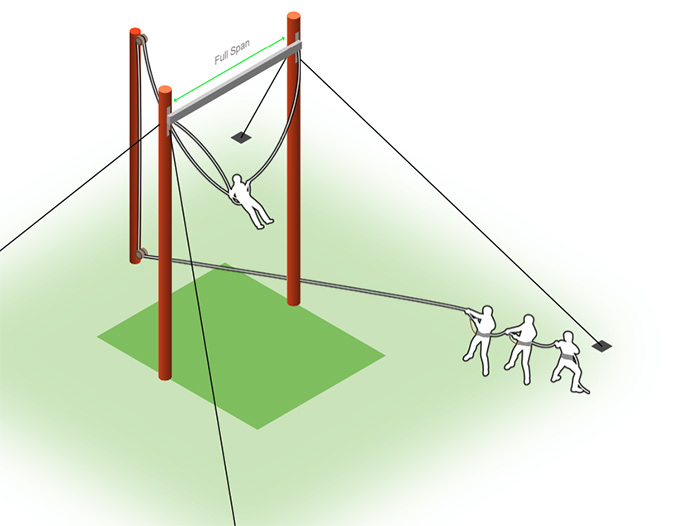
TEAM GIANT SWING
OPTIONS: ELEMENTS – Solo Traverse

BALANCE BEAM

MULTI VINES

INCLINED LOG
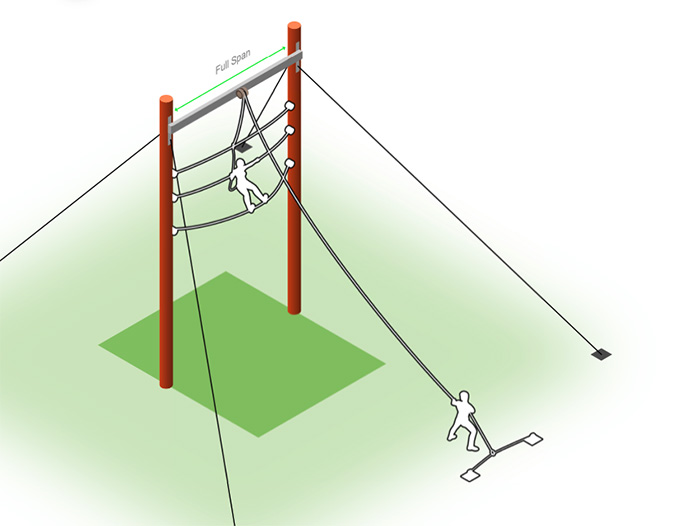
POSTMANS WALK
OPTIONS: ELEMENTS – Team Traverse
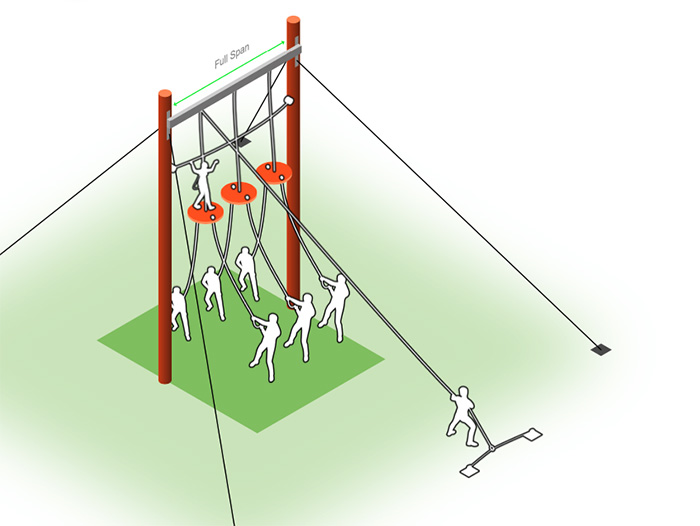
LILLY PADS

TRAP DOORS
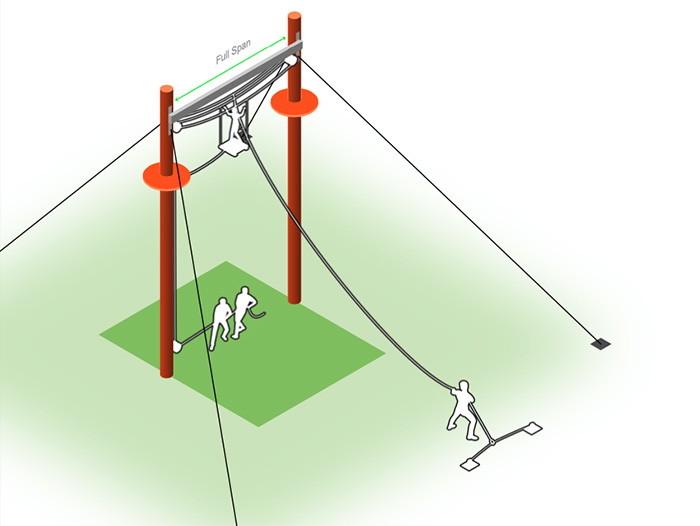
MAGIC CARPET
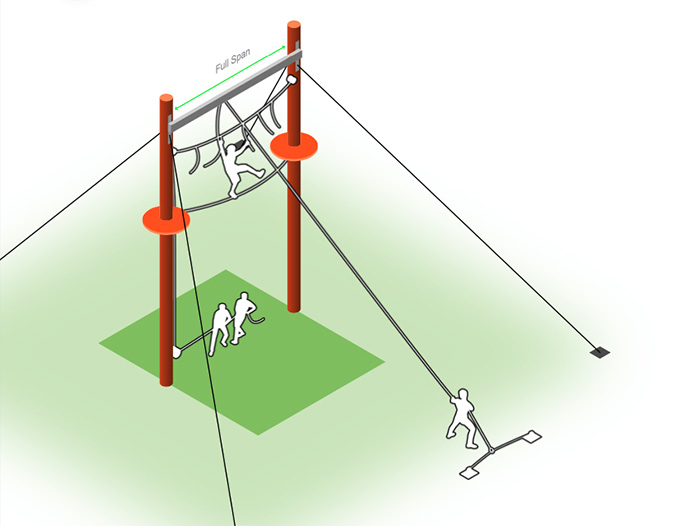
TEAM MULTIVINES
OPTIONS: ELEMENTS – BELAY METHODS
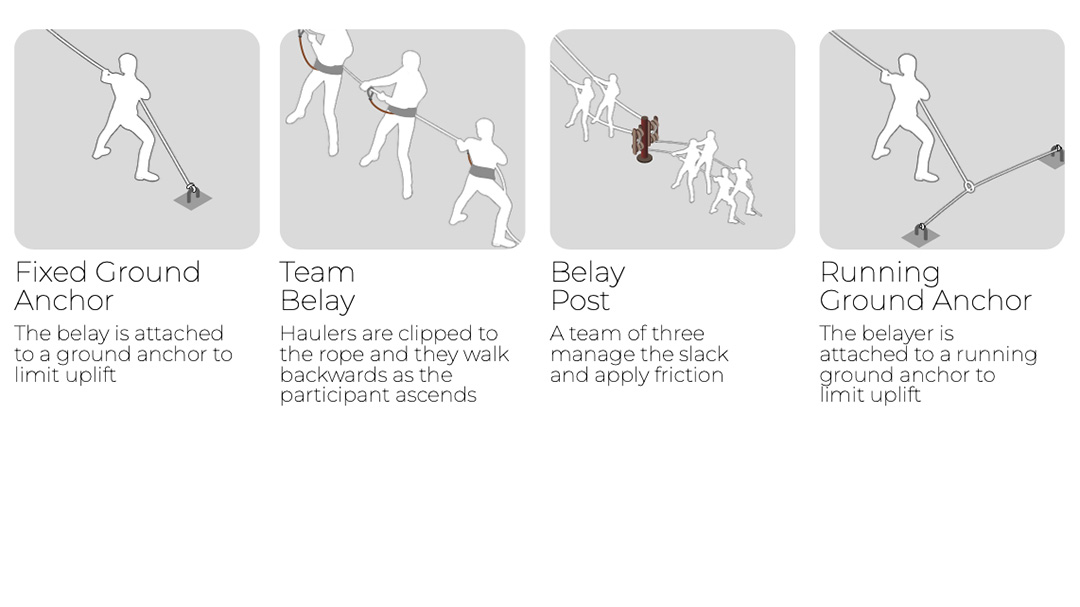
THINGS THAT WORK WELL TOGETHER
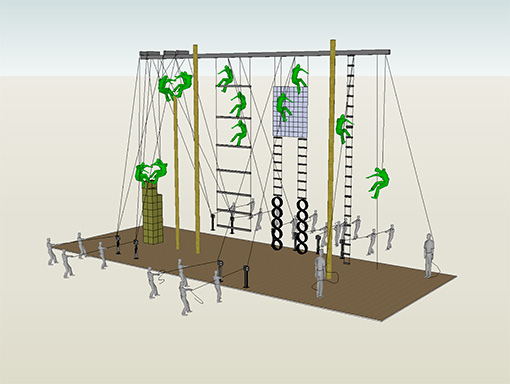
LEFT CANTILEVER: Cratestack / High All Aboard / Leap of Faith.
CENTRE SPAN: Giant Ladder / Vertical Play Pen.
RIGHT CANTILEVER: Ladder Climb / Rope Climb.

LEFT CANTILEVER: Cratestack / High All Aboard / Leap of Faith.
CENTRE SPAN: Climb Wall / Abseil Wall.
RIGHT CANTILEVER: Giant Ladder
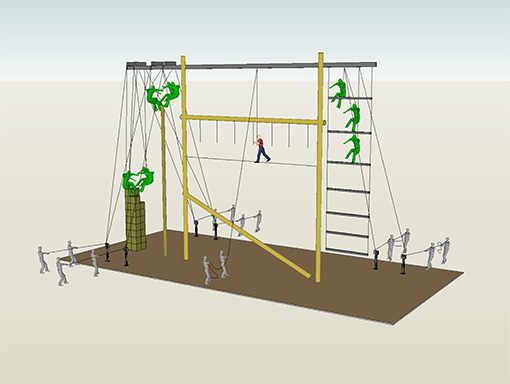
LEFT CANTILEVER: Cratestack / High All Aboard / Leap of Faith.
CENTRE SPAN: Inclined Log / Multivines / Balance Beam. THE BEST COMBO WE HAVE FOUND YET OF TRAVERSING ELEMENTS – ITS A 3 LAYER JOURNEY.
RIGHT CANTILEVER: Giant Ladder.

LEFT CANTILEVER: High All Aboard / Leap of Faith.
CENTRE SPAN: Giant Ladder / Vertical Play Pen.
RIGHT CANTILEVER: Powerfan / Cratestack (with a net screen).
POSSIBILITIES

ADD CANTILEVERS AND BEAMS TO TOWERS
-
Blended Vertical and Trail Courses.
-
Square, Rectangle, Triangle layouts.
